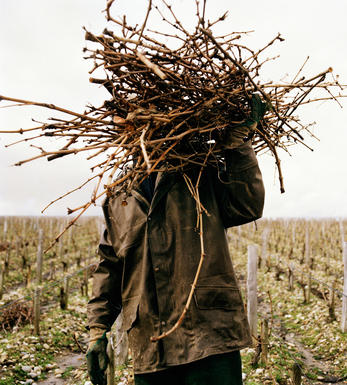
2012 Tablas Creek Vineyard, Côtes de Tablas Red, Paso Robles, California, USA

About this WINE

Tablas Creek Vineyard
Tablas Creek is the realization of the combined efforts of two of the international wine community's leading families, the Perrin family, proprietors of Château de Beaucastel, and Robert Haas, founder of Vineyard Brands.
They had since the 1970s believed the California climate to be ideal for planting Rhône varietal grapes. In 1987, they began the lengthy process of creating a Châteauneuf-du-Pape style vineyard from scratch in the New World. The partners searched California from the foothills of the Sierras in the north to coastal Ventura County in the south, looking for a close match to the Mediterranean climate and high pH soils of Château de Beaucastel. In 1989, they purchased a 120-acre parcel twelve miles from the Pacific Ocean in west Paso Robles.
They named it Tablas Creek Vineyard, after the small creek running through the property. The property elevation averages 1,500 feet, and the shallow, rocky limestone soils are of the same geologic origin as those at Beaucastel. Summer days are hot and sunny, but the influence of the nearby Pacific cools the nights, and the remarkably Rhône-like Paso Robles climate allows the grapes to mature fully and yet retain crisp acidity.
To ensure that the vines at Tablas Creek were of the highest quality and same genetic source of those at Beaucastel, the partners imported vinifera from the French estate. Several clones each of Mourvédre, Grenache Noir, Syrah, Counoise, Roussanne, Viognier, Marsanne, Grenache Blanc and Picpoul Blanc were imported. This diversity allows Tablas Creek to replicate the clonal selection of an established French vineyard. In January 1990, the first vine cuttings were imported from France.
Before arriving at Tablas Creek, they underwent a USDA-mandated three year indexing process that ensured that the vines were virus-free; the first imported vines were available for multiplication at Tablas Creek in 1993. New clones arrived at Tablas Creek each year between 1993 and 2000. Planting continues at the estate, with the goal of having 110 acres in vines by 2010. The Tablas Creek Vineyard label debuted with the construction of the estate winery for the 1997 vintage. Beginning with the 2001 whites and the 2000 reds, the wines were named Esprit de Beaucastel and Esprit de Beaucastel Blanc.

Grenache/Garnacha
Grenache (Noir) is widely grown and comes in a variety of styles. Believed to originate in Spain, it was, in the late 20th century, the most widely planted black grape variety in the world. Today it hovers around seventh in the pecking order. It tends to produce very fruity, rich wines that can range quite widely in their level of tannin.
In many regions – most famously the Southern Rhône, where it complements Syrah and Mourvèdre, among other grapes – it adds backbone and colour to blends, but some of the most notable Châteauneuf du Pape producers (such as Château Rayas) make 100 percent Grenache wines. The grape is a component in many wines of the Languedoc (where you’ll also find its lighter-coloured forms, Grenache Gris and Blanc) and is responsible for much southern French rosé – taking the lead in most Provence styles.
Found all over Spain as Garnacha Tinta (spelt Garnaxa in Catalonia), the grape variety is increasingly detailed on wine labels there. Along with Tempranillo, it forms the majority of the blend for Rioja’s reds and has been adopted widely in Navarra, where it produces lighter styles of red and rosado (rosé). It can also be found operating under a pseudonym, Cannonau, in Sardinia.
Beyond Europe, Grenache is widely planted in California and Australia, largely thanks to its ability to operate in high temperatures and without much water. Particularly in the Barossa Valley, there are some extraordinary dry-farmed bush vines, some of which are centuries old and produce wines of startling intensity.


Buying options
Add to wishlist
Description
60% Grenache, 25% Syrah, 10% Counoise and 5% Mouvedre. There is a lovely purity to this wine. Redcurrants, plums and spice. Good minerality and freshness, silky texture on the palate with firm tannins. Well balanced and restrained.
Fiona Hayes - Wine Buyer The 2012 Cotes de Tablas is a delicious, easy drinking blend of 60% Grenache, 25% Syrah, 10% Counoise and 5% Mourvedre. Showing lots of Grenache character with its ripe red fruits, spice, underbrush and hints of licorice, it is medium-bodied, moderately concentrated, yet graceful and balanced on the palate. Showing some nice tannin on the finish, it should evolve nicely for 4-5 years.
Jeb Dunnuck - Wine Advocate - eRobertParker.com - Aug 2014
wine at a glance
Delivery and quality guarantee